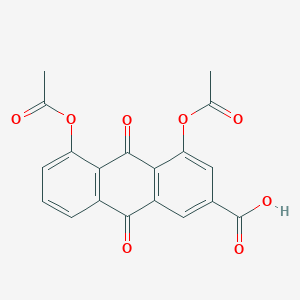-
Categories
-
Pharmaceutical Intermediates
-
Active Pharmaceutical Ingredients
-
Food Additives
- Industrial Coatings
- Agrochemicals
- Dyes and Pigments
- Surfactant
- Flavors and Fragrances
- Chemical Reagents
- Catalyst and Auxiliary
- Natural Products
- Inorganic Chemistry
-
Organic Chemistry
-
Biochemical Engineering
- Analytical Chemistry
- Cosmetic Ingredient
-
Pharmaceutical Intermediates
Promotion
ECHEMI Mall
Wholesale
Weekly Price
Exhibition
News
-
Trade Service
August 13, 2020 // -- In a recent study published in the international journal Developmental Cell, scientists from the Westa Institute in Philadelphia and other institutions in the United States found that breast cancer cells may send signals due to lack of oxygen to induce tissue around normal endocystic cells. In the event of carcinogenic changes, these signals/information are wrapped in particles called extracellular vesicles, and the shape and position of mitochondrials in normal cells of the receptor are reprogrammed, ultimately facilitating the deregulation of tissue morphology.
Pixabay/CC0 Public Domain M.D. Dario C. Altieri says we all know that cancer cells have been "talking" to normal cells nearby, which is important for promoting cancer occurrence and progression, so how this happens and what signals are transferred from one cell to another, and better understanding the details of the process may help researchers uncover the molecular mechanisms by which tumors block nearby normal cells to promote disease.
In this study, researchers cultured breast cancer cells in an oxygen-deficient device to simulate an oxygen-deprived environment for cancer cells, which is a major feature of the micro-environment around most solid tumors, and then studied EVs released by these breast cancer cells.
EVs are tiny structures wrapped in a double-layered membrane that can be released by most cells and transmit different molecules and information to other cells, so vesicles may be an important means of intercellular communication, with the researchers focusing on small EVs (sEVs) between 30 and 150 nm in size.
To analyze the effects of sEVs produced by cancer cells on nearby normal cells, the researchers developed normal mammary epithellal cells that carry sEVs released by cells under hypoxia, and then found that the ability of normal subject cells to migrate in cultured fluid increased, which may be related to the redlocation of mitochondrials in cells to extracellular cells, which are consistent with the role of mitochondrials previously described by researchers in supporting cell movement.
In addition to regulating mitochondrial behavior, the researchers found that sEVs released by oxygen-deprived breast cancer cells induce a large number of changes in gene expression in normal subject cells, as well as activate the expression of multiple path paths involved in cell movement, cell skeleton reconstruction, and cell-to-cell communication, in addition to sEVs that show decreased levels of cell death and increased levels of inflammatory response.
The researchers then found that the integrator-linked kinase (ILK, Integrin-Linked Kinase) may be the main signaling component wrapped in sEVs, which induces mitochondrial changes in cells and increases the migration of receptor cells; Exposure to sEVs produced by hypoxia-deficulated breast cancer cells may promote the general median of normal mammary structure and the emergence of a variety of carcinogenic conversion characteristics, including morphological changes, abnormally regulated cell proliferation, decreased cell death levels, and the emergence of epithelat transformation process markers, which mediate the movement of cancer cells and their ability to migrate from the original location.
Irene Bertolini, a researcher at the end of the study, said the results suggest that breast cancer cells may use sEVs to promote local and distant disease progression, and based on our observations, reprogramming targeting ILK or mitochondrials may hopefully help researchers develop new strategies to disrupt tumor-promoting processes in the cancer microencology.
() Original source: Irene Bertolini, Jagadish C. Ghosh, Andrew V. Kossenkov, et al. Small Extracellular Vesicle Regulation of Mitochondrial Dynamics Reprograms a Hypoxic Tumor Microenvironment, Developmental Cell (2020). DOI: 10.1016/j.devcel.2020.07.014.







